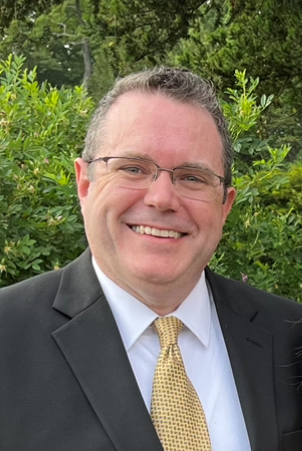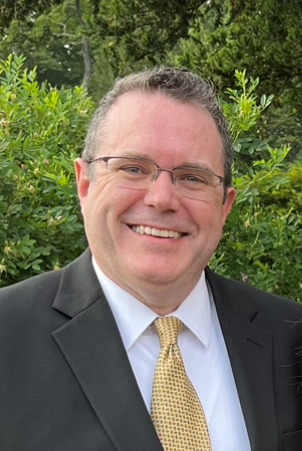Community Events

June 16, 2023
SMU Spotlight: Metallurgy Moments With Roger Walburn
Written by Becca Moczygemba
Sometimes the skills we obtain through our education can be used in ways other than we expect. Roger Walburn is a metallurgist who uses his specialty to help customers find the perfect fit. His knowledge of metallurgy enables him to get into the weeds with the technical aspects of steel, which educates his customers on what material will suit them best.
This week, SMU was able to steel some of Roger’s time so he could teach us something.
The full text of the interview is below.

Steel Market Update: As a metallurgist, what’s your favorite type of metal?
Roger Walburn: Oh, steel, by far.
SMU: Did you always like steel or was this something that came after you became a metallurgist?
RW: I think it’s just ingrained. I got exposed to materials science, which is heavily based in metallurgy, and I’ve lived in Pittsburgh for most of my life. It’s in the football team name, it’s part of the culture here, and I have a great appreciation for it. And I like to make the point, certainly as I do in our Steel 101 class, about how the foundation of our infrastructure is based in steel.
SMU: Speaking of Steel 101, you know we have another Steel 101 class that we’re doing in July. How did you get into teaching that?
RW: I’ve always been involved in teaching on some level, going back to Carnegie Mellon. There was an opportunity to help incoming freshmen and I’ve enjoyed being able to share what I know. I receive great personal satisfaction with helping others, particularly to learn something that they might not know or be familiar with, and that’s been true in steel. I got to know John Packard over the years in the industry, and the opportunity came up.
SMU: Why did you choose steel as your concentration?
RW: It was really birthed out of the fact that I was in a coop program when I was at Carnegie Mellon with Allegheny Technologies. I got to work on the floor, got to see it made firsthand. They give you some amount of responsibility and it was good to be involved with that and feel like I was contributing. It just snowballed from there because ATI offered me a job before I even graduated, and I worked with them for about a decade. My father and grandfather also worked in the steel industry.
SMU: Can you tell me about the company you’re currently working for?
RW: Blair Strip Steel has been in existence for 100 years; it was started in 1923. But the Blair family has been involved in iron and steel for close to 250 years, so there’s a long history. They’ve established themselves as a niche player for cold-rolled strip. Maybe one of the few true strip mills left in the US. We produce cold rolled, hot rolled, and hot roll one pass, which is an intermediate product between the two. Our focus is certainly the cold-rolled strip, but at gauges other producers can’t make.
SMU: What is one pass hot rolled?
RW: Well, you take a hot-rolled product and put it through the cold mill, but you don’t cold reduce it as much as you typically would have with cold-rolled product.
SMU: That’s interesting. I had no idea that was an option.
RW: It improves the metallurgical structure, the tolerances, the finish, and it’s cheaper than the fully processed cold rolled.
SMU: Fascinating! What other technical tidbits do you have?
RW: There are any number of variations, and not only in gauge and width, but in strength and in formability, that make each order. Any order that Blair gets can be highly engineered and highly customizable to a very, very specific need. The point, I think, is to open people’s eyes to the opportunity that there’s not just hot rolled and cold rolled, but there are iterations in between that all have different price points and different quality levels.
SMU: What does your day-to-day look like as a metallurgist?
RW: I’ve spent the past 10 years exclusively in commercial departments. So I solve supply chain issues, work with the purchasing team, answer customer inquiries, supply pricing, things of that nature. But my technical background has been a real a key driver for me professionally, something I’ve enjoyed doing. I work with my metallurgical colleagues to make sure that on a quality level, we can meet our customers’ needs. It’s a little bit different every day, which is one of the great joys of it.
SMU: Are there a lot of metallurgists out there?
RW: No, there’s probably not enough. I think there’s a generational loss of talent that’s happening across the board and the steel industry. I don’t think we’ve done a good job at recruiting, which I know is something SMU is supporting with the NexGen Award.
SMU: Yes, there’s so much knowledge that leaves when people leave the industry or retire.
RW: And that’s one of the things I’ve enjoyed being able to do, is not only try to teach to the younger folks, but to learn from the older folks. Anytime I’ve had the opportunity, I’ve looked for the mentor and that’s been a great experience here at Blair.
SMU: What’s something that companies can do to draw in younger talent or retain younger talent?
RW: I think supporting whatever initiatives are out there that are already existing; recruit, try to work with college students, go to college campuses.
SMU: Do you have any advice for people in the industry?
RW: A general philosophy that I hold to is to have an attitude of get to, not have to. Think of things as an opportunity rather than something you’re obligated to do. Live life with an attitude that you get to wake up and face the challenges before you. You can benefit from those challenges or help someone else through something that you’ve already gone through. And that’s on both the professional level and the personal level.
By Becca Moczygemba, becca@steelmarketupdate.com





